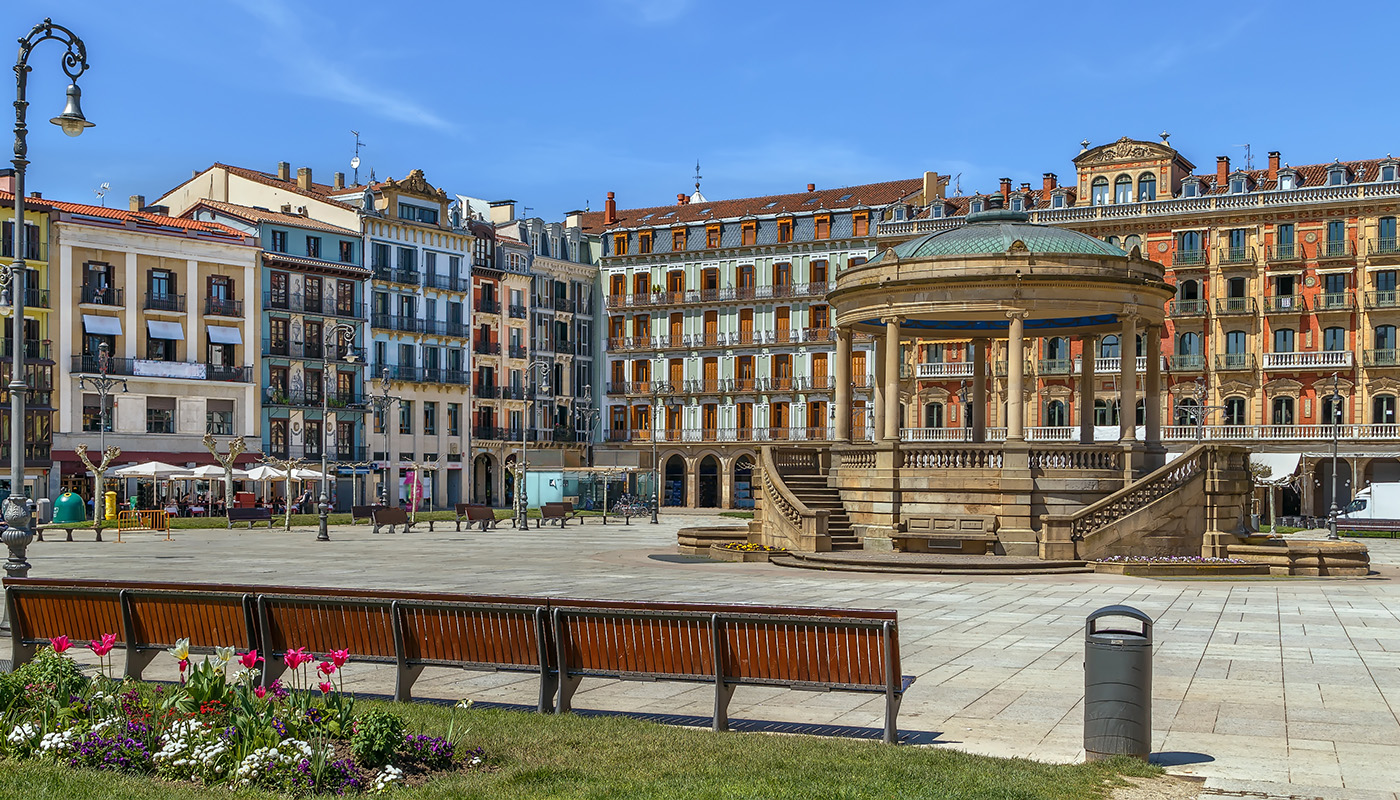Oman’s Grand Mosque was the brainchild of Sultan Qaboos, who in 1992 decided that his country should have one of the most important temples in the Arab world. Built with 300,000 tonnes of Indian sandstone (which lend it a luminous white tint) and with capacity for 20,000 worshippers, this edifice was opened by the Sultan of Oman on 4 May 2001. Situated near the sea in Muscat, it is not only the building’s architecture that impresses, but also its rich and exotic interior decoration. It has for example a hand-woven carpet was made by the Iran Carpet Company to cover the entire floor of the mosque’s main prayer room. Another detail that gives you an idea of the huge scale of this ‘dream’ is that the mosque was built on a 416,000 m² plot of land, and that the building itself occupies some 40,000 m².
History of the mosque
It all began in 1993, when Sultan Qaboos bin Said (who ruled over the Sultanate from 1970 until 2020) announced a competition to realise his dream of building the region’s biggest and most lavish mosque in Oman. The project took exactly six years and four months to complete. The square musalla, or main prayer hall, is reserved exclusively for men and measures 75 metres on each side. Above this, there is a central dome that rises to 50 metres above ground level, and which contributes to the mosque’s profile — along with the great minaret (90 metres tall) and four lateral minarets, each 45 metres tall. A total of five minarets, to represent the five pillars of Islam.
The main musalla can hold 6,500 worshippers while the women’s musalla holds 750. There is in additional room for another 8,000 on the exterior paved floor, and space is also available in the interior courtyard and in the corridors. A total capacity therefore of 20,000.

What you can see on your visit
One of the most remarkable and valuable features of the interior decoration of Sultan Qaboos Grand Mosque is the carpet that covers the floor of the prayer hall. It contains 1,700 million knots, it weighs 21 tonnes and it took four years to make. An interesting fact: 600 Iranian women worked to make it. It has a traditional design with arabesque motifs that combine the motifs of Tabriz, Kashan and Isfahan. Thirty-eight colours were used in different shades, most of them produced using natural plant dyes. It is the world’s second-largest carpet in a single piece. In total, it measures around 70 x 60 metres and has a surface area of 4,343 m².
Another important feature of the interior decoration is the Swarovski chandelier that hangs from the dome of this prayer hall, and is one of the biggest such lamps in the world. It is 14 metres tall, weights 8 tonnes, and was made by the German company Faustig. Also extremely eye-catching are the mosaics that decorate the walls, and which are carved in coloured marble brought from various countries of the world.

Recommendations and advice
The Sultan Qaboos Grand Mosque is the only mosque that can be visited by non-Muslims. Visitors can tour the entire complex, which is divided into four areas: the men’s hall, the women’s hall, the library (containing over 20,000 books relating to Islam), and the conference hall, where talks and multicultural discussions are held.
Visiting times at the Sultan Qaboos Grand Mosque are Saturday to Thursday, 8.00 – 11.00 a.m. The library has longer opening hours: from Saturday to Wednesday, 9.00 a.m. – 2.00 p.m. and 4.00 p.m. – 9.00 p.m. On Thursdays it is open in the morning only. Admission is free of charge.
Visitors need to bear in mind that as this is a Muslim place of worship, they need to respect the rules regarding dress, such as covering their arms and legs. Women also need to cover their hair. If anyone forgets, they can borrow the required items in the Grand Mosque’s vestibule.

Hotels to stay in Oman
The best place to stay in Oman has a Spanish name and is Spanish owned. Due to its value for money and the excellent range of comforts it offers, we recommend the Barceló Mussanah Resort, Sultanate of Oman hotel. This is a four-star establishment that can serve as the ideal base and place to relax for your trip to Oman. What’s more, the hotel is situated on the beach front, in the south of the Al Batinah region, and right on the Gulf of Oman. The hotel is relatively close to the International Airport and to the country’s capital, Muscat, so it provides the perfect departure point for exploring and enjoying the secrets of the Middle East.
The resort has 234 spacious and comfortable guest rooms, and 74 luxury apartments conducive to relaxing and enjoying the wealth of possibilities. In addition, the complex has a free, high-speed Wi-Fi connection. And, of course, you won’t need to worry about the heat, because this establishment has 4 impressive swimming pools with views of the Gulf of Oman, as well as a children’s pool — in addition to a private beach with beautiful gardens and palm trees.
If you’re a discerning diner, the hotel has two excellent restaurants: Mydan and Azure. And when it’s time for a cocktail, you can choose between the Compass Bar, the Pool Bar, or the modern Deck Bar & Lounge. To put the finishing touch to your trip, we recommend the Zayna Spa and Health Fitness Club, with 10 treatment rooms and personal attention: spa, sauna, steam baths, Jacuzzi, gymnasium, and more.









































































